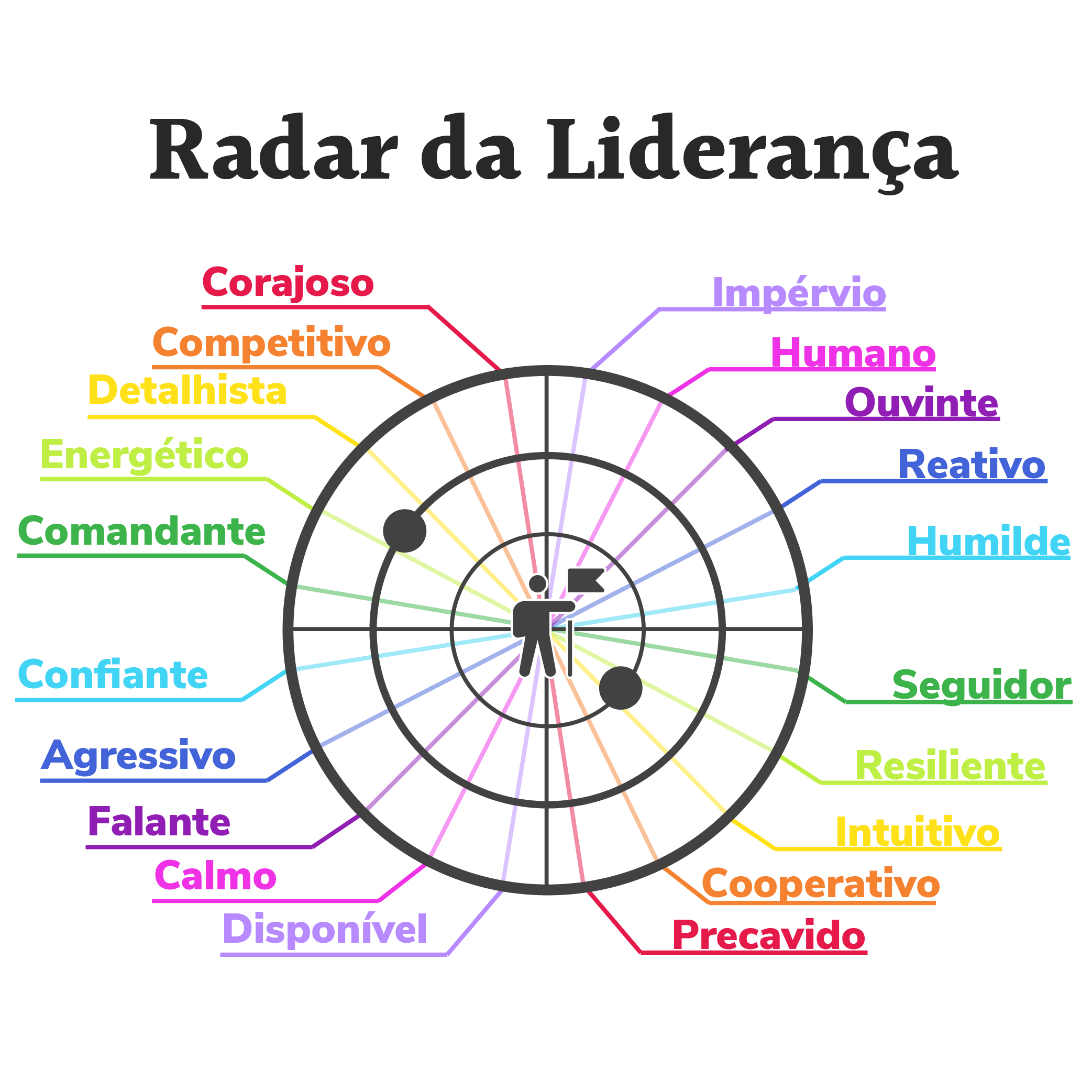The Leadership Radar - Which Side Are You Leaning Towards?
There are no bad teams, only bad leaders. This is precisely why leading is never an easy task. In my experiences with teams of all levels and maturity, I have come to materialize a fundamental observation on what separates good leaders from excellent leaders: Leadership is about finding the balance between opposing attributes.
To summarize the attributes of a great leader, I present the Leadership Radar, which illustrates the conflicts they must resolve every day:

Courageous x Cautious
Leaders need to deal with uncertain situations every day, and they almost never have all the information available. It is essential that decisions are made with maximum agility and assertiveness, but never without looking at all the data and understanding that some decisions are irreversible, such as a dismissal or an acquisition, and require more caution.
Competitive x Cooperative
The top-performing athletes in any sport are always the most competitive, spending most of their time training and improving their skills at a level far superior to the competition. On the other hand, leadership presupposes the existence of a team, and the individual contribution of a leader will never surpass the contribution of those who are truly on the front lines. The same applies to competition between teams: it is excellent to want to surpass the competition in all aspects, but if this harms the industry and the mission, then everyone loses, including the competitive leader.
Detail-Oriented x Intuitive
Some people have a natural inclination to delve into the details of what they are doing: for them, security comes from the certainty that every detail has been studied and properly planned. On the other hand, this can make them forget the importance of having someone dedicated to understanding intuition, the big picture, and the mission as a whole, and no one is better suited for this than the leader. In this way, the troops feel empowered and responsible for executing the details in the best possible way, and they begin to see the leader as a tactical genius.
Energetic x Resilient
Certain individuals are full of energy, strength, and speed, but this may not be sustainable: all teams have high-energy and low-energy periods, and balancing these periods is essential for their sustainability. On the other hand, leaders with a lot of resilience may not have the energy to move the team in the most critical moments, such as during a bid race.
Commander x Follower
Most leaders understand that they are in command and responsible for the team’s success, but they need to understand that other members have more knowledge and skills in specific areas. In these cases, they must be ready to take a step back and become a follower, ready to execute someone else’s plans, with the self-confidence that this makes them a stronger leader, rather than reducing their authority.
Confident x Humble
Confidence is essential to deal with adverse situations, but it should never turn into arrogance. Leaders must be humble to recognize their limitations, while at the same time developing the confidence necessary to win in the market.
Aggressive x Reactive
The biggest mistake one can make on a battlefield is not playing to win. Teams that only worry about reflecting the offers of other companies instead of researching and creating new things are destined to fail. On the other hand, completely ignoring the initiatives of other companies tends to generate more and more competitive disadvantages, as your company may lose customers by failing to provide services they consider market standard.
Talkative x Listener
Most leaders are excellent communicators by nature. On the other hand, the ability to listen to customers, the team, and the market makes all the difference when it comes to making assertive decisions and performing at the highest level. Balancing the natural impulse to express oneself with the rare ability to listen and understand is a challenge, but immensely rewarding.
Calm x Human
A leader must convey an impression of calm and control, so that their team can feel secure and rely on them. Even so, some days everything will go wrong, and the mission will seem unattainable. On those days, a good leader will not become robotic trying to control the situation. A great leader can express their frustration and convert that energy into productive solutions.
Available x Impervious
A leader should be close to the troops and understand their motivations, dreams, aspirations, and career plans better than they do themselves. On the other hand, they should not be so close that a team member becomes more important than the mission, nor so close that the troops forget who is in charge.
Different Situations Require Different Leaders
No situation is the same as another, and it is important to recognize that the same individual who easily achieved a complex mission may not have the same ease in supporting another team in a different mission. Even so, what determines a leader’s excellence is their flexibility and their ability to navigate between the extremes of the radar, rather than always being balanced in every way.
With all this in mind, I invite you to reflect:
- Which sides are you leaning towards?
- Which of these attributes are strongest in you, and which do you need to improve?
- Can you analyze a given situation and adapt your positioning?